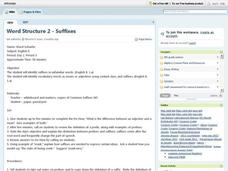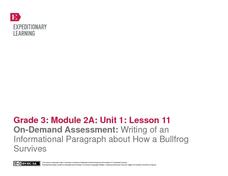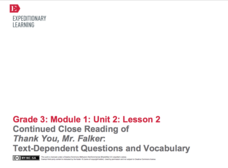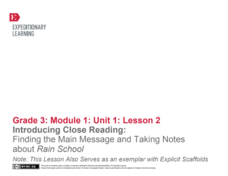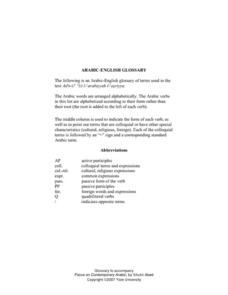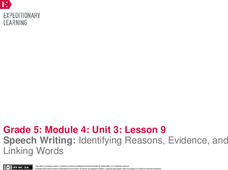University of North Carolina
Modals
If you could have any job in the world, what would it be? Modal verbs such as could and would express possibility, as the installment of a compilation of informational handouts describes. A series of tables help explain the strength,...
Curated OER
Mistakes That English Native Speakers Make
In this common English mistakes worksheet, students read 20 sentences and identify the mistakes in each. Students then categorize the mistakes as apostrophe, article, capital letter, clumsy style, comma, extra or missing words, or...
Curated OER
Mistakes That English Native Speakers Make 4
In this common English mistakes instructional activity, students read 20 sentences and identify the mistakes in each. Students then categorize the mistakes as apostrophe, articles, capital letters, clumsy style, commas, extra or missing...
Curated OER
Connotation: Three Lessons for Effective Word Choice
Over the course of three days, middle schoolers explore the concept of connotation. They differentiate between the connotative and denotative meanings of sports team names, develop their own team names, logos, and text, and revise a news...
Curriculum Corner
Roll, Read, and Color
Familiarize young readers with consonant digraphs using a collaborative phonics activity. Working in pairs, children take turns rolling a die and reading a word from the included chart that corresponds to the number they rolled. Each...
Curated OER
Common Idioms-- Body Parts 2
For this language arts worksheet, students read 20 names of body parts in a word bank. Students fill in the missing words in common idioms. Example: Riding the roller coaster was quite a ------- raising experience! (hair)
Curated OER
Test Your Vocabulary Skills: More Common Idioms 2
In this language arts worksheet, students discover that idioms are spoken or written sentences where the meaning is not obvious from the individual words used. Students read 10 idioms and match them to their meanings.
Curated OER
Word Structure 2 - Suffixes
Eighth graders identify suffixes in unfamiliar words. They identify vocabulary words as nouns or adjectives using context clues and suffixes. They review the definition of a prefix, along with examples of prefixes and explain the...
Curated OER
Tricky Word Endings Fill-In Puzzle
In this spelling words with tricky endings worksheet, 4th graders fill in a spelling puzzle with 20 five to eight lettered words with tricky endings.
Curated OER
Fourth Grade English: Their, They're, and There
While this lesson provides a great idea for an exploration, it is incomplete. Learners are asked to identify the differences between their, they're and there, and discuss homonyms, but there are not activity descriptions. This lesson...
EngageNY
Close Reading of Bullfrog at Magnolia Circle: Text-Dependent Questions, Main Ideas, and Key Vocabulary about the Bullfrog
As your 3rd grade class finishes reading Bullfrog at Magnolia Circle, the eighth lesson plan of this unit helps readers from an understanding of the very specific information on the final page of the book. As with the entire unit,...
EngageNY
On-Demand Assessment: Writing of an Information Paragraph About How a Bullfrog Survives
Having read and discussed Bullfrog at Magnolia Circle, third graders demonstrate their bullfrog expertise by writing informational paragraphs. Building on the note-taking and paragraph planning from the previous lesson plan, learners...
EngageNY
Continued Close Reading of Rain School: Text-Dependent Questions and Vocabulary
The engaging story Rain School is further explored in the third lesson of a larger unit that explicitly teaches close reading skills by answering questions whose answers can only be found inside the text. Through teacher modeling and...
EngageNY
Continued Close Reading of Thank You, Mr. Falker: Text Dependent Questions and Vocabulary
In the second lesson plan in a series that revolves around the story, Thank You, Mr. Falker, learners practice the skill of answering direct questions from the text while using complete sentences. After a teacher-led review of how to...
EngageNY
Introducing Close Reading: Finding the Main Message and Taking Notes About Rain School
This second lesson in a larger unit is perfect for the beginning of the year because it explicitly teaches 3rd graders how to use close reading skills by identifying unfamiliar words, figuring out the gist, and defining important...
EngageNY
Documenting Research: Sorting and Recording Information About the Wheelwright
Fourth graders practice using a graphic organizer to record their notes and answer text-dependent questions while supplying evidence of how they found their answer. They focus on a machine called the wheelright, which was commonly used...
EngageNY
Mid-Unit 2 Assessment: On-Demand Informational Writing
Lesson 7 focuses on building academic vocabulary and writing an explanatory letter with supported textual evidence. For the first five minutes of the lesson plan, the educator reminds the class of how to read and refer to the accordion...
BW Walch
Daily Warm-Ups: Grammar and Usage
If grammar practice is anywhere in your curriculum, you must check out an extensive collection of warm-up activities for language arts! Each page focuses on a different concept, from parts of speech to verbals, and provides review...
Yale University
Arabic - English Glossary
Designed to accompany Focus on Contemporary Arabic by Shukri Abed, this document provides 41 pages of Arabic terms with English translations. The words are organized alphabetically in Arabic and include notations that indicate colloquial...
EngageNY
Launching Frightful’s Mountain: Building Background Knowledge and Establishing Reading Routines
Welcome to Frightful's Mountain. The teacher introduces scholars to the text Frightful’s Mountain by reading the first chapter aloud. Learners then talk with a partner about the text. The instructor models answering focus questions as...
EngageNY
Speech Writing: Identifying Reasons, Evidence, and Linking Words
Enjoy the view. Scholars continue viewing a video of an opinion speech, this time identifying the supporting evidence the speaker employs. After watching, they work in small groups on their shared writing projects, crafting a body...
Curated OER
Homophones and Homographs
Getting tired of correcting to, two, and too? What about weather and whether? Use a thorough lesson on homophones and homographs to clear up those differences. Fourth and fifth graders identify which words sound the same and are spelled...
University of North Carolina
Latin Terms and Abbreviations
N.B.. cit., n.b., viz., sc., inf. e,g,—these abbreviations frequently appear in academic papers and on works cited lists, but what do they mean? Part of a larger series to improve writing skills, the handout on Latin terms and...
Reed Novel Studies
Walk Two Moons: Novel Study
Enjoy solving riddles? Perhaps Sal, a character in Walk Two Moons, is the only one capable of understanding a mysterious message left on her doorstep. On a road trip with her grandparent, Sal tries to make sense of the bizarre world...









